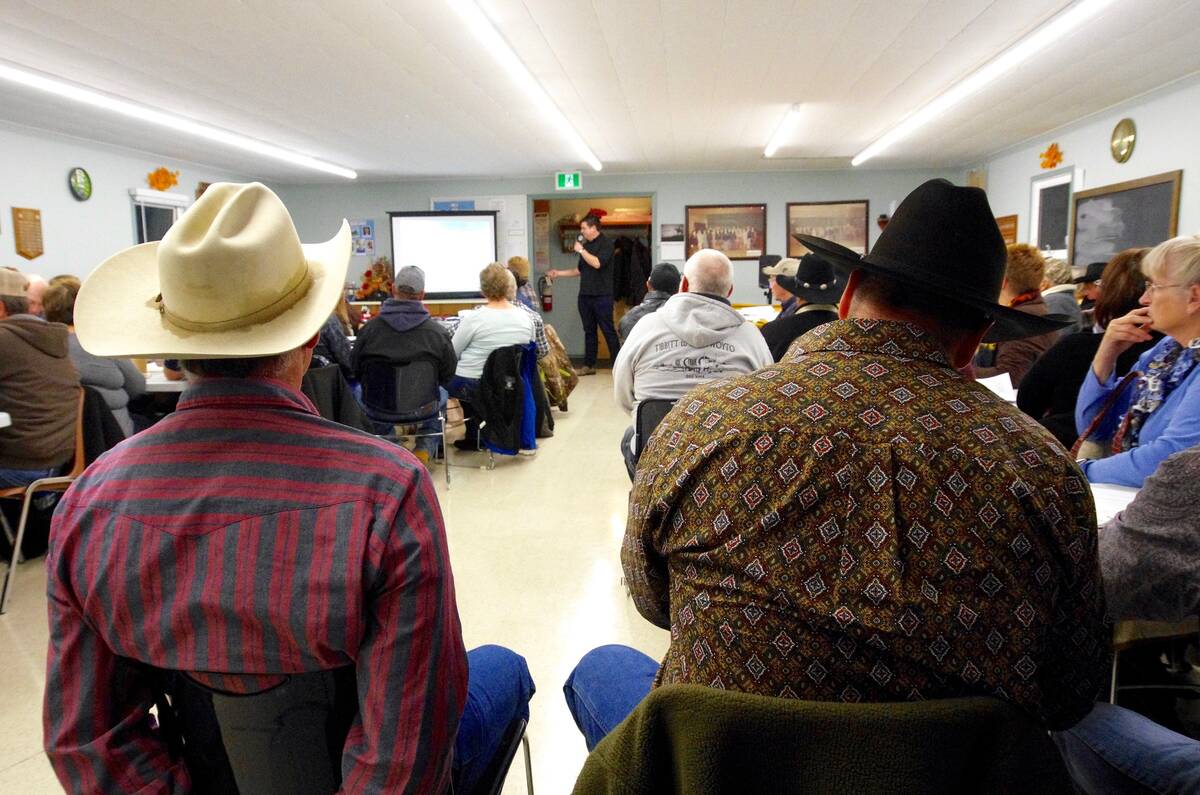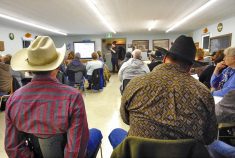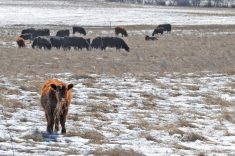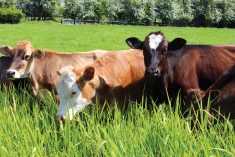You don’t have to like horses to appreciate the value the horse industry adds to Manitoba.
As one industry participant once described it while standing on the sidelines at one of the many horse shows every summer, “There’s lots of money in horses – and I have the bills to prove it.”
A 2009 study by Kelwin Management Consulting on the “Economic Impact of the Equine Industry in Manitoba” put some solid numbers behind that observation.
The capital value of the estimated 81,000 horses, the associated equipment to haul them and gear to ride them with is nearly $1 billion in Manitoba.
Read Also

Don’t blow off that beef producer meeting
Local veterinarians and livestock experts often speak at beef producer group events. They have good advice for the farmer on vaccines, calving, beef herd management and more.
Ranchers aren’t the only ones to benefit from this horse craziness. The sector also represents a significant feed market.
People spend about $256 million annually looking after their horses. That doesn’t factor in their spending on gas, entry fees, and concession-stand food while using their horses recreationally.
The study profiles a highly diversified industry – ranging from those who use the animals for medical ingredients or raise them for meat to those enjoying them as pets or performance animals. Thousands of horses in this province have been used for all of the above during their lives.
The Pregnant Mares Urine (PMU) sector has been the foundation beneath much of that activity for the past 60 years, providing a steady supply of affordable stock for all riding disciplines.
Granted, the PMU industry was once viewed as the unmentionable country cousin in the equine family. The “pee” farmers were noted for scrub stock, as any mare that could reproduce could be on the line, regardless of the quality of animal. The foals produced in this process were considered throwaways – up to 40 per cent went directly into the meat market.
The industry became an easy target for animal-welfare groups, playing on the public’s sentiments to be sure, but also highlighting areas in which the industry needed to improve.
Wyeth Ayerst, now owned by Pfizer, confronted those issues head on, bringing in tough standards and enforcing them with inspections. It also formed NAERIC, the North American Equine Ranchers Information Council, a unique organization that oversaw the industry’s transition from pee farming to equine ranching.
NAERIC strongly encouraged investments in better breeding stock and that prompted many ranchers to also invest in training, which is equally important to a quality equine experience.
In recent years, the stock produced by these ranches has put the province on the map as a place to go when looking for quality horses.
But no amount of adjustment can counter shrinking demand.
The drugs used to treat women suffering from side-effects of menopause have fallen out of favour and the company that created the industry has been rolled into another larger player. Technology has improved the processor’s ability to extract what it needs from smaller volumes of inventory.
The latest rounds of cuts announced a few weeks ago will leave 26 ranches in operation, down from 400 just a few years ago.
It’s the end of an era for equine ranchers, many of whom are second-or third-generation farms.
But despite their disappointment over losing their contracts, you won’t find many who will say they have been mistreated by the contractor.
In fact, the equine ranching industry is an all-too-rare case study of a supply chain that actually treated its farmer participants fairly and with dignity.
They received a reasonable price for their labour and investment, they knew well in advance of the production season what that price would be, and when downsizing became necessary, there was a compensation package designed to help offset the costs of transition to another income stream.
But many of these ranchers are in a position to remain in the horse-breeding business. Some have done enough market development that there will be a continued demand for their young stock.
However, the Kelwin study flagged an even bigger challenge for the equine industry – our rapidly urbanizing society.
Owning a horse in the country is about putting up some shelter and a good fence; in the city, it means being able to afford the cost of boarding the animal at a facility equipped to care for it.
That, combined with the cost of purchasing or leasing an animal to ride and the rising cost of transportation threatens to push the sport out of reach for many. It will take some creativity to keep equine activities accessible.
The study recommended establishment of an industry stakeholder group that would work with the provincial government to further develop the sector through continued improvements in genetics, competition incentives, training opportunities for coaches, and an expansion of horse-friendly trails and facilities.
If the Manitoba government is serious about diversifying the rural economy and bridging the urban-rural gap, it’s a worthwhile investment. [email protected]















